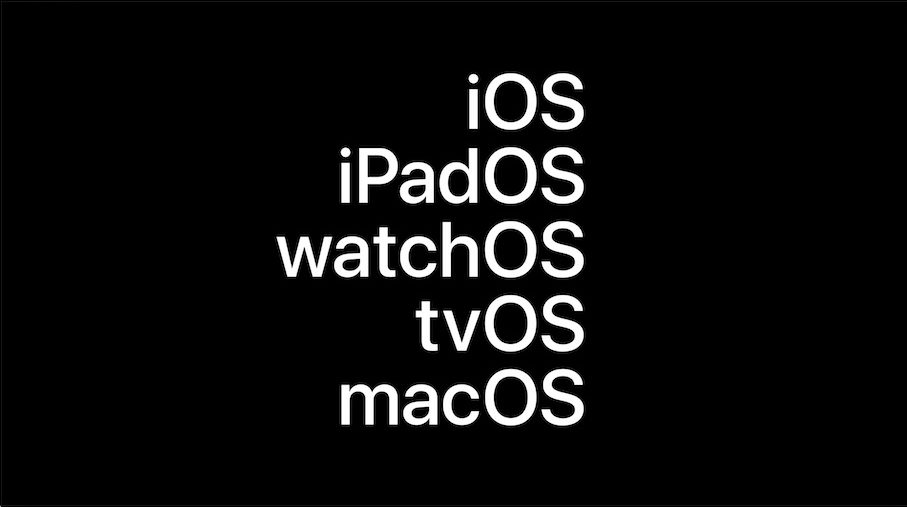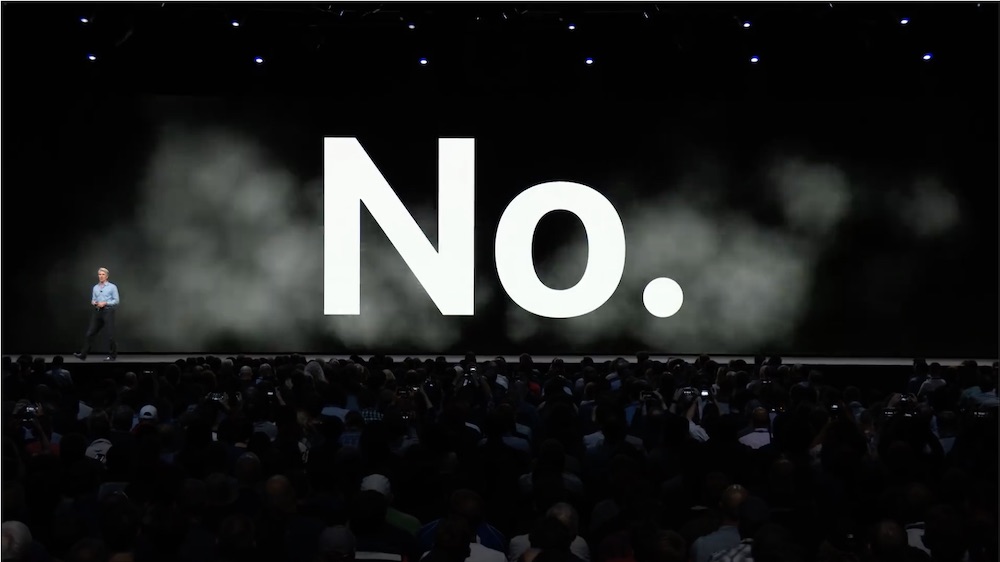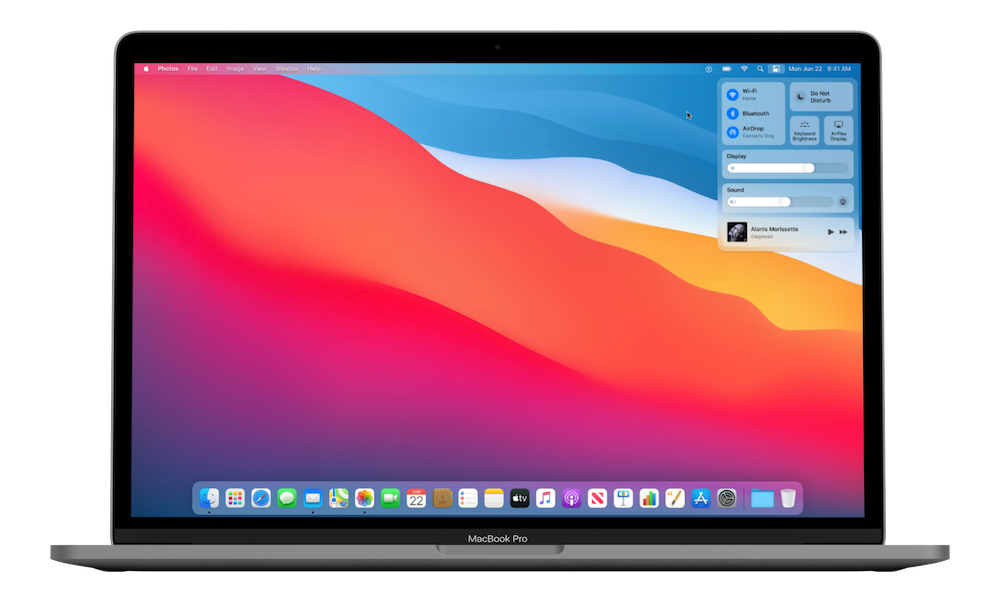The iPadification of macOS: What Does it Mean for Developers of Productivity Software?
Last week, Apple made a ton of announcements during their Worldwide Developer Conference (WWDC). And even though they used a slide at the beginning that listed all of their major platforms (iOS, iPadOS, watchOS, tvOS, and macOS) as the intended structure for the presentation, to me many of the announcements felt very app-specific instead of platform-specific. For example, new features in Maps (i.e. cycling directions) are available everywhere. Every time I heard some version of the statement “this is also available on the (fill in the platform blank),” I felt like something was shifting a little bit. There were also several sections that were platform agnostic, like privacy and home. As a causal observer (I’m not a developer), it seems to me like there’s an emphasis on features being brought first into the Apple ecosystem, and then extended to all the available platforms (where appropriate).

(Source: WWDC 2020 Keynote, YouTube)
The one outlier here in recent history has been the Mac. Because it’s historically used Intel-based processors, it has required a different development approach from Apple’s ARM-based iOS devices. This has made for some awkward presentation moments, as Macs have been held back due to Intel delays while at the same time Apple has touted (rightfully so) the speed and performance of their own chips in their iOS devices.
Additionally, Macs have always felt different thanks to precision input methods. Using a mouse pointer (instead of your finger) has meant that Mac apps could historically offer smaller touch targets and more complex user interface design. Argument could be made as to whether this is good or bad, but Macs have at the very least been different.
But if WWDC is any indication, that will not always be the case.
One of the big surprises for me this year was the amount of attention macOS received. Many people thought this would be a quiet year for the Mac. The belief was that the next version of macOS would be a “Snow Leopard release” focused on bug fixes and stability.
Instead, we got a brand new user interface and a much anticipated processor transition announcement as macOS finally made the leap to version 11. And while the things that make the Mac great are all present and accounted for, my initial thought was admittedly, “this looks a lot like iPadOS.”
But I also remember the keynote from WWDC in 2018 when Craig Federighi answered the question, “are you merging iOS and macOS?” with an emphatic “No” in one of the most iconic keynote slides in recent memory.

(Source: WWDC 2018 Keynote, YouTube)
So did Apple go back on their word?
I don’t think they did. To me, the attention macOS is getting this year is actually evidence of Apple’s commitment to the platform. But it’s also proof that I don’t fully understand just yet what Apple considers the path forward for the Mac to be.
So this year’s WWDC has shown us that 1) the Mac is still very important to Apple, and 2) because it’s important, macOS will change and evolve as Apple pushes it forward – and sometimes not in the way that long-time Mac users expect.
And while we still don’t know exactly what the Mac of tomorrow will look like, there are lots of signs from WWDC 2020 hinting that the future of the Mac could look more and more like an iPad:
- The transition to Apple Silicon. There have been rumors of ARM-based Macs for a long time, and now they’re here. While Apple didn’t use the term ARM (they called the processor technology “Apple Silicon”), that’s what these are. This means that iPad apps and Mac apps will soon use the same processors and technical architecture, allowing iOS (and iPadOS) apps to be brought to the Mac more easily.
- Improvements to Mac Catalyst. In addition to the announced chip transition, Apple also made several improvements to Mac Catalyst, a technology that allows developers to reuse portions of their iOS code when recompiling their apps for the Mac. I know a lot of developers have been frustrated by the shortcomings with Mac Catalyst in the past, but it looks to be rounding into a legitimate tool for developers to bring their apps to Intel-based Macs. The virtualization features should make this even easier for developers who want Mac users on older hardware to access their apps everywhere.
- The iPad-ification of macOS in Big Sur. The addition of Control Center on the Mac seems a little out of place in my opinion, and the new design will take me some time to get used to. I’m personally not a huge fan of the iPadOS-style selection cursor, but there’s no denying that the operating system overall looks really nice. There are still several things in macOS that you’ll likely never see on an iPad (i.e. Terminal), but as Stephen Hackett mentioned in Connected episode 300 this new design direction seems to point strongly towards a future touchscreen Mac.

Apple also demoed iOS software (Monument Valley 2) being run on a Mac. Honestly, it looked really cool. And while I instantly see the appeal for things like games, I couldn’t help but wonder about what this means for the developers of some of my favorite productivity apps. For example:
How does this change long-time business models that rely on offering separate apps for separate platforms?
Things (our favorite GTD app) currently charges separately for their apps on different platforms: $49.99 for the Mac version, $19.99 for iPad, and $9.99 for iPhone and Watch. The Omni Group is another example that comes to mind (although in the case of OmniFocus they recently started giving customers the option for buying the software outright or choosing a monthly subscription, they historically have charged premium prices for great software). In our opinion, many developers like this are justified in charing higher prices for serious productivity apps. But what happens when Apple lets you use all iPadOS apps on the Mac? In John Gruber’s The Talk Show Remote from WWDC video interview, it sounded to me like developers would have the ability to opt out of having their iOS apps available on the Mac (meaning iOS apps would be available on the Mac by default), and Apple Silicon-based Macs could theoretically run those apps just fine – without any modifications. On the one hand, this gives Mac users access to all of their iOS apps that they previously couldn’t get use on the Mac. For something like a podcast app, this is great. But on the other hand, it also means that the default behavior will be to make iOS apps available on the Mac. For a lot of small companies, this puts them in a difficult spot. Developers of productivity apps that already face resistance by consumers to higher-priced apps in the iOS App Store may now be forced to enact what could be considered a user-hostile approach in not letting users run the iOS versions of their apps on their Macs. If they do make their iOS apps available on the Mac, it is quite possible that the user experience is not the same. In that case, users will probably have no problem paying a higher price for a premium Mac app that does exactly what they need. But if Apple does as good a job as I think they might in bringing iOS apps over to the Mac, consumers may decide that the iOS version is “good enough.” This is what I think is a little bit dangerous to developers. If that happens, demand for premium Mac apps goes down and a potentially significant portion of the customer revenue for developers is now gone. Even if they are still able to offer the Mac version at a higher price, this will change the app market on the Mac. A lot of unknowns here, and I’m a little concerned about how this all shakes out. I know the folks at Cultured Code are smart and I’m sure they’ll figure this out, but I couldn’t help feeling a little bad for them during the keynote.
Does this force more developers to embrace subscription-based pricing?
There is not an announcement that goes by about an app switching to a subscription where we don’t hear from vocal users who are upset by the change. And I get it. Personally, I don’t like subscriptions either and will avoid them whenever possible. But if the market for a higher-priced Mac app completely dries up and “good enough” iOS apps running on the Mac take over, it’s quite possible that a lot more companies will embrace a single subscription that gives access on all platforms (Fantastical is the latest big example that comes to mind). Subscription fatigue is a very real thing, but if Apple encourages developers to make an app once and make it available on all platforms, do they have any other viable options? I’m not excited about having to pare down the apps that I use if the majority of serious productivity apps end up switching to a subscription-based pricing model, but I’m afraid I’ll be forced to make those difficult choices if that’s where things end up.
Does this increase or decrease the appeal of a service like SetApp?
I love Setapp. In my opinion, the selection of apps that it gives you is a phenomenal value. But what happens if the majority of major developers embrace the porting of iPadOS apps over to macOS? I’m assuming those versions would be available through Apple App Store and I would guess that you’ll be able to deliver those apps directly from the website as well, but will they also give developers the option of distributing those apps through third-party services like SetApp? Or does sandboxing prevent something like this in the future? It seems to me that if Apple is serious about the Mac App Store, they would want to make increase the appeal by having great software available there and not other competing “app stores” like SetApp. Does that mean that iPadOS apps that are compiled for Mac are limited in their functionality if not delivered via the App Store? If so, how do the apps that get ported and released via the Mac App Store compare quality-wise with the apps available in SetApp? If the apps are equal, how many developers will choose to add their app to a service like SetApp vs. creating their own individual subscription options? Lots of questions to be answered here.
But there’s a lot to be excited about too. There’s a lot of advantages that come with unifying the Apple platforms. For example, I can’t wait to see what kind of battery life the next generation of MacBook Pros are able to achieve (from what I’ve heard from people who understand this stuff, doubling the battery life isn’t out of the question). It’s also clear that Apple is treating the Mac as a first-class citizen. There’s no wondering whether it is the forgotten product in their lineup anymore. There’s also a lot to be said for the continuity gained between devices for users that have both an iPad and a Mac. Shawn wrote about the appeal of this as an iPad-first user last week:
It shouldn’t feel like there are tradeoffs if you are choosing between an iPad or a Mac. The more continuity there is between apps, operating systems, and the work we are doing on these multiple devices, the better.
But as a Mac-first user myself, I do confess that I have some unanswered questions still about what the future of the platform looks like – and what it means for developers of some of my favorite apps. Apple has announced that the transition to Apple Silicon would be completed within two years, which seems pretty quick to me. So the good news is that we won’t have to wait long to get some answers.
Our Must-Have, Most Used Productivity Apps
We spend an inordinate amount of time sorting through hundreds of apps to find the very best. We put together a short list of our must-have, most-used apps for increasing productivity.
